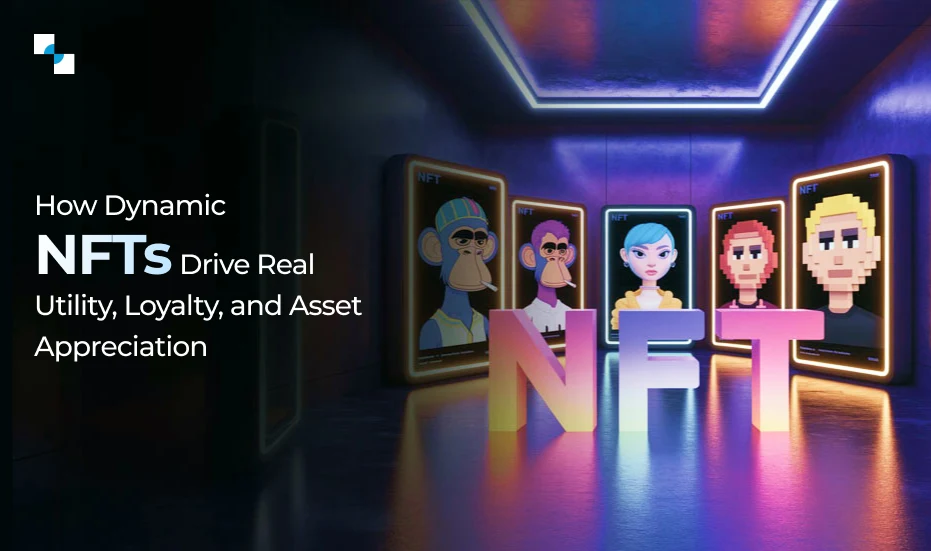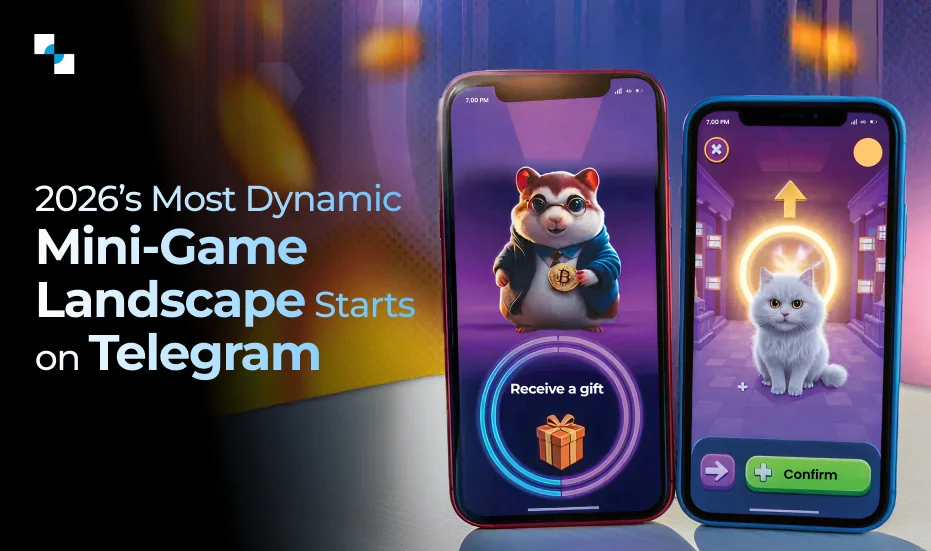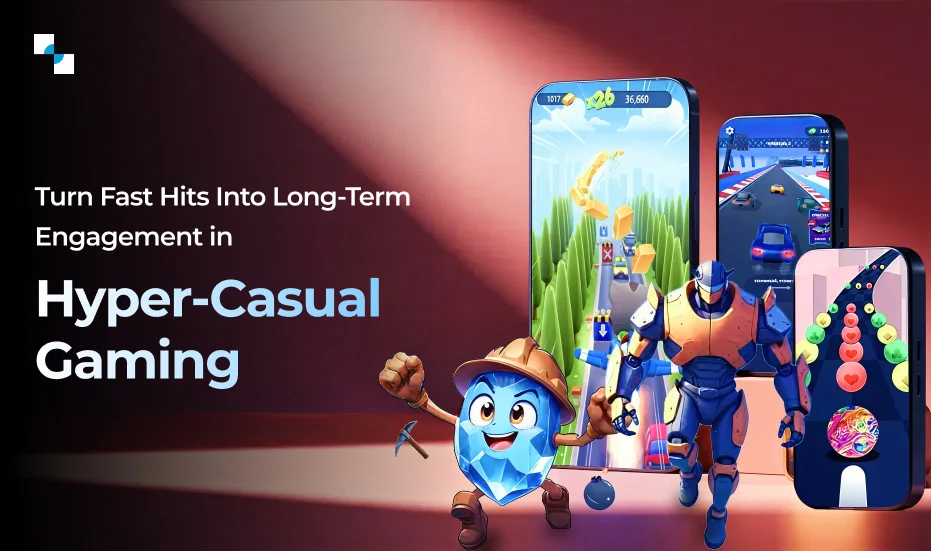The gaming industry is not just thriving—it’s exploding. Mobile gaming alone accounts for nearly half of this revenue, showcasing the immense potential for innovation across platforms. Game developers are constantly striving to create experiences that stand out in a crowded marketplace, leveraging both conventionally hit methods and decentralized innovations found in web3 games. Web 3 game developers are also leading the charge by integrating blockchain-based features and community-driven governance, pushing the boundaries of interactive entertainment.
However, before diving headfirst into coding or designing assets, a game development company must pause and reflect on the foundational steps that will set their project up for success. The checklist outlined here isn’t just about ticking boxes—it’s about fostering a mindset of strategic planning, creative problem-solving, and meticulous execution.
Let’s begin!
Why Does Every Game Development Company Need a Roadmap?
Pre-development planning acts as the backbone of your project, ensuring that all stakeholders—from designers to programmers—are aligned toward a common goal.
Without proper planning, even the most brilliant ideas can falter under the weight of poor execution. For game developers, this stage involves laying down clear objectives to ensure that the final product aligns with both market demands and internal capabilities. A robust roadmap allows a game development company to:
- Identify potential bottlenecks early in the process.
- Allocate resources efficiently, avoiding unnecessary expenditures.
- Build trust with stakeholders by demonstrating professionalism and preparedness.
Moreover, having a detailed plan enhances communication within teams and across departments, fostering a culture of accountability and transparency. The gaming market is oversaturated, with 6.5% of total playtime in 2023 dedicated to new releases. To stand out, game developers must adopt a dual focus: innovation and efficiency.
How Game Developers Can Define the Core Concept?
Every legendary game began as an idea—a spark of creativity that evolved into something extraordinary. But how do you ensure your concept has the potential to captivate players?
A compelling game idea isn’t just about flashy graphics, it’s about solving a problem, fulfilling a desire, or offering an experience that resonates with players. Ask yourself:
- What emotions do I want my players to feel?
- Is there a gap in the market that my game can fill?
- How does my game differentiate itself from existing titles?
For example, consider the success of “Among Us.” Its simplicity and social interaction element tapped into a universal craving for connection during the pandemic.
1. Identify Your Target Audience
Before a game development company sketches your first character design or writes a single line of code, take a moment to ask yourself: Who am I making this game for? To narrow down your focus, consider factors like age group, geographic location, gaming preferences, and platform usage. Conduct surveys, analyze social media trends, and study competitors’ successes and failures to gather actionable insights.
2. Research Market and Trends in Gaming
Staying ahead of industry trends is vital for game developers aiming to remain relevant. For instance, the rise of blockchain technology has given birth to Web 3 gaming platforms, which offer unprecedented levels of player ownership and engagement. Similarly, mobile gaming continues to dominate global markets, while virtual reality (VR) and augmented reality (AR) present exciting opportunities for immersive gameplay. By staying informed about emerging technologies and shifting consumer behaviors, game developers can position themselves at the forefront of innovation.

Tools and Frameworks for Conceptualizing Your Game
Once you’ve nailed down your core idea and USP, it’s time to bring structure to your vision. Several tools and frameworks can assist game developers in this process:
- Game Design Document (GDD): A GDD serves as the blueprint for your entire project. It includes details about gameplay mechanics, art style, storylines, character designs, and technical specifications. Think of it as the Bible for your game development company, ensuring everyone involved is on the same page.
- Mind Mapping Software: Tools like Miro or XMind allow you to visually organize your thoughts and connect disparate ideas. Mind maps are particularly useful during brainstorming sessions when creativity flows freely but needs to be channeled effectively.
- Prototyping Platforms: Before committing to full-scale development, create a prototype using engines like Unity or Unreal Engine. Prototypes enable you to test core mechanics and gather feedback early in the process, saving time and resources down the line.
Technical Considerations for a Game Development Company
With your game concept firmly established, it’s time to shift gears and focus on the technical backbone of your project. This phase is where a game development company either thrives or falters, depending on the choices they make. When selecting a tech stack, consider factors such as team expertise, budget constraints, and long-term maintenance requirements.
1. Choosing the Right Technology Stack
The technology stack game developers choose will dictate everything from how your game performs to how easily it can be updated post-launch. For instance:
- Unity is ideal for cross-platform games, offering robust support for both 2D and 3D projects.
- Unreal Engine excels in high-fidelity graphics and is a favorite among AAA studios.
- Godot provides an open-source alternative for flexibility without licensing fees.
2. Scalability and Performance Optimization
As your player base grows, so too will the demands placed on your infrastructure. A game development company must prioritize scalability from day one. Implement cloud-based solutions like AWS or Google Cloud to handle peak loads efficiently. Use load-testing tools to simulate real-world scenarios and identify potential bottlenecks before they impact users. Performance optimization should also extend to asset management. Compress textures, minimize draw calls, and optimize scripts to ensure smooth gameplay across all devices.
3. Security Protocols for Gaming Platforms
Security is non-negotiable for game developers. Prioritize safeguarding player data with robust measures like AES-256 encryption and multi-factor authentication (MFA) to block unauthorized access. Adopt a proactive stance—anticipate threats rather than react to breaches, as a single breach can cost $4.45 million on average (IBM, 2023) and erode player loyalty overnight.
Budget Planning & Resource Allocation
For any game development company, without a clear understanding of costs and revenue streams, even the most innovative ideas can collapse under financial strain. To avoid budget overruns, start by breaking down your costs into categories:
- Development Costs: Includes salaries for designers, programmers, artists, and sound engineers. Don’t forget to account for software licenses, hardware, and prototyping expenses.
- Marketing and Promotion: Pre-launch campaigns, influencer partnerships, and advertising are essential for building buzz around your game. Allocate at least 20-30% of your total budget to marketing efforts.
- Operational Expenses: These include utilities, legal fees, and other overheads. For remote teams, factor in collaboration tools and cybersecurity measures.
- Contingency Fund: Game developers should always set aside 10-15% of your budget for unexpected challenges, such as delays, scope changes, or technical issues.
Legal and Compliance Essentials: Protecting Your Intellectual Property
Understanding the legal landscape is not just about avoiding lawsuits; it’s about securing the future of your project and ensuring that your hard work translates into tangible value.
1. Navigating Copyrights, Trademarks, and Patents
The first step for a game development company in protecting your game is to secure the appropriate legal protections for its various components:
- Copyrights: Copyright protects original works of authorship, including code, art, music, and narrative elements.
- Trademarks: A trademark safeguards your game’s name, logo, and other branding elements.
- Patents: While less common in gaming, patents can protect innovative mechanics or technologies.
2. Compliance with Gaming Regulations
Gaming regulations vary significantly across regions, making compliance a complex but essential task. Here are some key areas game developers must consider:
- Age Ratings: Organizations like the ESRB (Entertainment Software Rating Board) and PEGI (Pan European Game Information) assign age ratings based on content.
- Gambling Laws: If your game includes loot boxes, microtransactions, or play-to-earn mechanics, ensure they adhere to local gambling laws.
- Data Privacy: Data privacy has become a hot-button issue. Comply with regulations like GDPR (General Data Protection Regulation) in Europe or CCPA (California Consumer Privacy Act) in the U.S. to avoid hefty penalties.
Consult Pro Game Developers for Market-Leading Strategies
As we’ve explored throughout this article, creating a successful game is far more than just writing code or designing assets. Remember, the gaming industry is dynamic and ever-changing. Adhering to the principles outlined in this checklist—from pre-development planning to post-launch optimization—will enable you to navigate the challenges and opportunities ahead.
Therefore, if you are looking to craft your first gaming title, consult your ideas with the game development company that takes these lessons to heart. Game developers at Antier build with purpose, iterate with passion, and always strive to deliver experiences that captivate and inspire. Get in touch with us for meticulous planning, strategic decision-making, and relentless execution.







